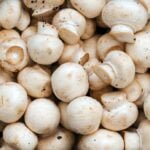Substrate for shimeji
Title: The Substrate for Shimeji Mushrooms: Recycling Agricultural Waste for a Bountiful Harvest
Introduction:
Shimeji mushrooms, identified for their scrumptious and earthy taste, are a preferred alternative amongst mushroom fanatics. But do you know that the substrate used to develop these mushrooms might be comprised of pasteurized agricultural waste, supplemented sawdust, or wooden chips? In this blog submit, we’ll discover the completely different substrate choices for cultivating shimeji mushrooms and talk about how these selections can contribute to each sustainability and profitable cultivation.
1. Understanding the Benefits of Mushroom Substrates:
Before diving into the specifics, it is necessary to understand the importance of utilizing acceptable substrates for mushroom cultivation. Substrates function the nourishing medium for mushrooms, offering them with important vitamins and performing as a help system for progress. By deciding on the appropriate substrate, you may improve the standard and yield of your shimeji mushrooms.
2. Pasteurized Agricultural Waste: A Sustainable Approach:
Using pasteurized agricultural waste as a substrate for shimeji mushrooms isn’t solely a sustainable alternative but in addition an efficient method to repurpose natural materials that might in any other case go to waste. Common examples of agricultural waste appropriate for shimeji cultivation embrace wheat straw, corn cobs, and cottonseed hulls. This substrate alternative contributes to eco-conscious farming practices and reduces the pressure on landfills.
3. Supplemented Sawdust: Accelerating Growth and Boosting Yield:
Sawdust, a byproduct of wooden processing, might be a really perfect substrate for shimeji mushrooms. However, it must be supplemented with extra vitamins to help optimum progress. Nutrients similar to bran or soybean meal might be combined with the sawdust to reinforce its dietary worth. This supplementation helps speed up mycelium colonization, improves fruiting circumstances, and finally results in increased yields of shimeji mushrooms.
4. Wood Chips: Favored by Wild Shimeji Varieties:
Certain wild types of shimeji mushrooms, such because the beech shimeji, thrive when grown on wooden chips. Wood chips present an acceptable setting for colonization and fruiting. Maple, oak, and beech wooden chips are generally used for this objective. However, you will need to notice that wooden chips might take longer to interrupt down in comparison with different substrates. Patience is required because the mycelium slowly colonizes the substrate earlier than producing the primary flush of mushrooms.
5. Substrate Preparation and Pasteurization Techniques:
No matter which substrate sort you select, correct preparation and pasteurization are essential to make sure profitable shimeji mushroom cultivation. Preparing the substrate entails breaking down the uncooked supplies into appropriate sizes and proportions, adopted by pasteurization to eradicate competing organisms and dangerous pathogens. The commonest pasteurization strategies embrace warmth remedies and steam sterilization, each of that are efficient in making a clear and supportive substrate setting.
Conclusion:
The substrate used to develop shimeji mushrooms performs an important position in each the sustainability and success of cultivation. By exploring choices similar to pasteurized agricultural waste, supplemented sawdust, and wooden chips, you can’t solely contribute to eco-conscious farming practices but in addition optimize the expansion and yield of your shimeji mushrooms. Remember to correctly put together and pasteurize your chosen substrate to make sure a wholesome and bountiful harvest. Happy mushroom rising!
[Word Count: 504]




